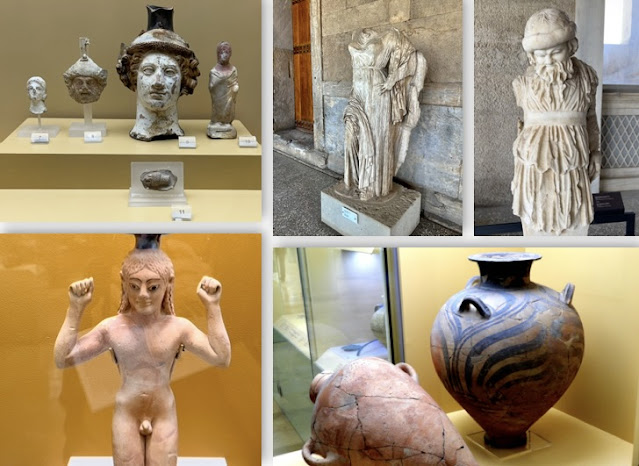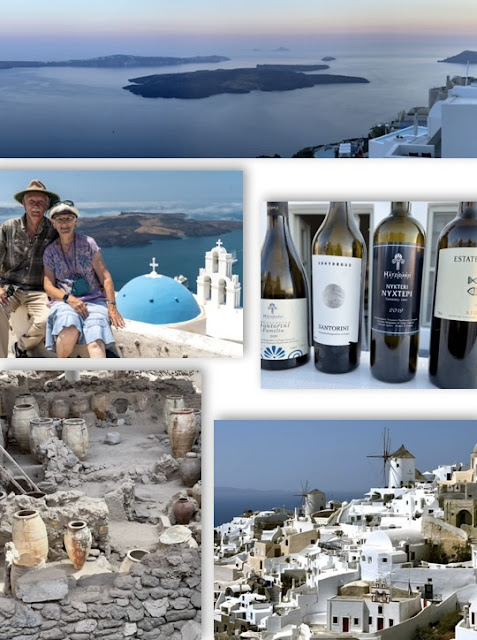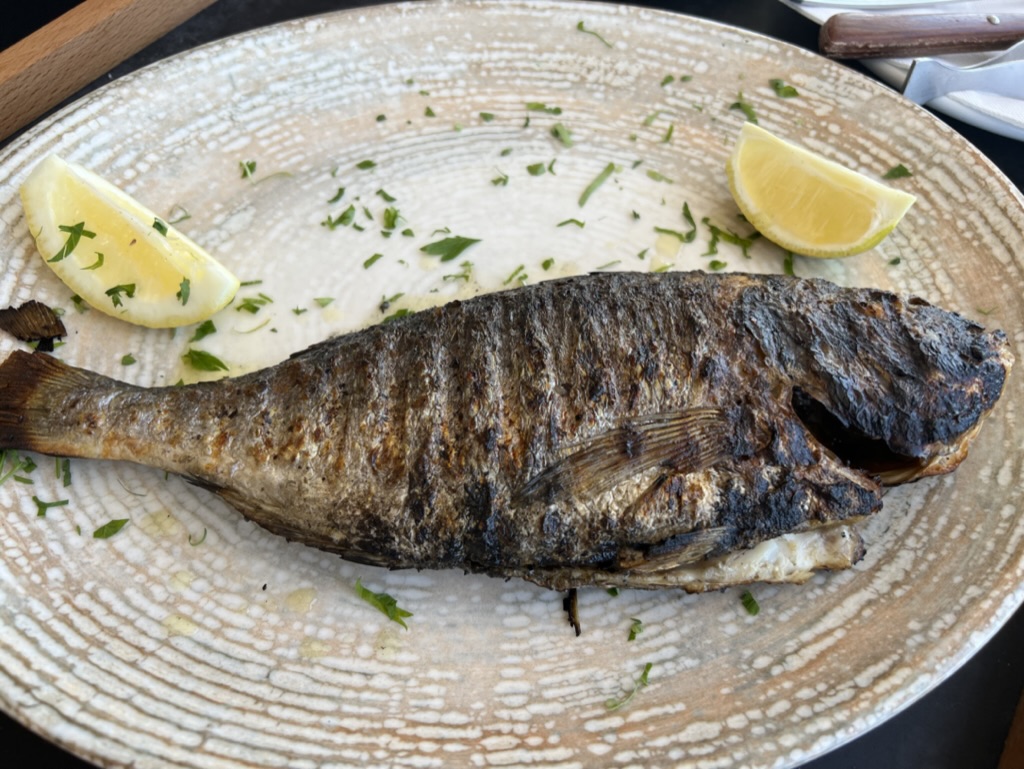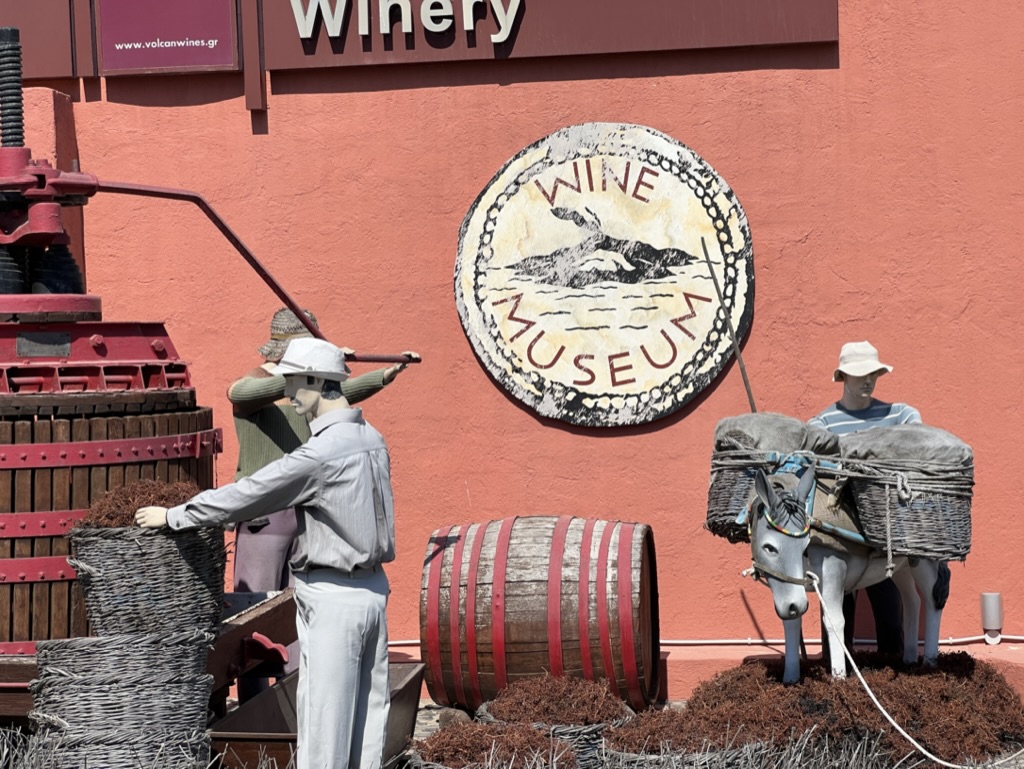It was the second trip to Athens for all of us and we were not so focused on the must see places. We planned to explore neighborhoods, museums, churches, shopping, and to enjoy wining and dining. We also wanted to take a cooking class. So we booked a hotel in the Psryi neighborhood, ie a bit less touristy than the Plaka, but nearby. The hotel turned out to be well located for shopping, the tourist stops and local nightlife. It is about a 20 minute walk or a 20 minute metro ride to the Acropolis. See our posting from November 2013 for our initial visit.
- Church of Kapnikara: a Byzantine church dating from 1000 AD
- The Orthodox Cathedral / Mitropolis: basically the Greek Vatican, it is relatively modern built in 1842 but the interior has classic Byzantine features.
- Church of Agios Eleftherios: built in 12 & 13C AD when the Parthenon was taken over by the Ottomans as a Mosque. Referred to as the Old Greek Vatican, made of recycled stones from older monuments
- The Holy Church of the Dormition of the Virgin Mary aka the Panagia Chrysospileotissa: built in late 1800's, it is closer to our hotel. Dormition refers to the passing of the Virgin Mary from earthly life. And Panagia is one of the titles of the Virgin Mary, used in Orthodox Christianity. Apparently referring to Mary by name is avoided. Hence "Dormiton" and "Panagia". We have yet to discover the reason for the Chrysospileotissa part of the name. It has striking architecture.
 |
| Top L-R: The Orthodox Cathedral, Church of Kapnikara, The Cathedral (interior); Bottom L-R Church of Agios Eleftherios, Holy Church of the Dormition |
From the Roman Forum, we headed to the Ancient Greek Agora, the ancient gathering place for meeting others, shopping, business meetings, worship, conduct government affairs, etc. We explored The Stoa of Attalos, formerly an ancient shopping mall and now a museum. Some of our favorites pieces are in the collage below. They are:
- Top Left: 4 vessels, left to right:
- Terracotta female head ca 400 BC
- Terracotta head of a warrior 420-400 BC
- Fragmentary plastic vase in the form of Dionysos' head 410 BC
- Terracotta figurine of a draped child 4th cent BC
- Top Center: a goddess, possibly Aphrodite
- Top Right: Herm in the form of a Silenus (2C AD). It probably served as a fence-post
- Bottom Left: Perfume bottle in the form of a kneeling athlete binding a ribbon about his head as a symbol of victory ca 540 BC
- Bottom Right: Amphoras
 | |||||
| Temple of Hephaestus, Church of the Holy Apostles, Hillside with Old National Observatory and the Agia Marina Church. View of Parthenon from below, Hadrian's Library |
- Theatre masks: In ancient Greece, actors wore masks made of wood or linen cloth, and with basic features to indicate the sex, age, character and morals of the heroes. On display were marble masks which was confusing as they are impossible to wear. It turns out these were used for theater related decoration..
- Bronze statue of Zeus or Poseidon. Found in the sea of Cape Artemision, in northern Euboea. The god, shown in great stride, extends his left arm before his body, while holding a thunderbolt or trident in his right hand. His identification as Zeus or Poseidon is controversial (the former identification is more probable). It is the work of a great sculptor of the early Classical period. ca. 460 BC.
- Silver rhyton: as head of a bull with golden horns and forehead adorned with a gold rosette. Royal Tomb IV at Mycenae. 16th century BCE. Note: A rhyton is a type of drinking vessel, typically having the form of an animal's head, with a hole for drinking at the bottom.
- Gold jewelry/treasure of Mycenae
- Group of Aphrodite, Pan and Eros: Made of marble and found on Delos. Island. The nude goddess Aphrodite attempts to fend off the goat-footed god Pan who makes erotic advances to her. She holds her sandal threateningly in her right hand, while the winged god Eros comes to her aid.
- Jockey bronze statue: (ca. 140 BC) was recovered from a ship wreck near Cape Artemision (off the island of Euboea, just north of Athens). The first parts of the equestrian statue were recovered in 1928, with more pieces found nearly 10 years later.
- Pillar with an offering to Asclepios: Marble part of a human face, placed in a niche of a hollow post meant to receive dedications. It was dedicated by Praxias after his wife's eyes were cured.
- Theatrical masks: Slab with six theatrical masks, probably from the decoration of the stage of the Theater of Dionysos.
- Reconstruction of the West pediment of Parthenon: The West Pediment illustrated the contest between Athena and Poseidon during their competition for the honor of becoming Athens' patron. The East pediment portrays the story of the birth of Athena.
- Sculptures of beautiful ladies, called The Caryatids, designed to serve as columns on the pagoda of the Erechteion Temple, with extra support provided by their massive braids. The Caryatids which can be seen at the Erechtheum (one of the few remaining buildings on the Acropolis) are faithful copies since the five remaining originals are here in the museum for their protection, conservation, and restoration.
About the sixth original Caryatid, well she was abducted by Thomas Bruce, the seventh Lord Elgin, who served as Great Britain’s ambassador to the Ottoman Empire at the beginning of the nineteenth century. She is now part of the booty at the British Museum.
- The Theatre of Dionysus (supported by Atlas)...dedicated to Dionysus, (the Greek god of wine, merriment, and theatre), was used as a theatre from 6C BC onwards. It was the first and largest theatre to be built in Athens and could seat up to 17,000 people. Modified and expanded over the centuries, it is the oldest Greek theatre and is the site where some of the most famous Greek plays from antiquity were first performed.
- The Odeon of Herodes Atticus was originally built in 161 AD for music concerts. It was restored in 1950 and since 1955 is one of the main venues of the annual Athens and Epidaurus Festival.
- The Parthenon: An enormous Doric-style temple that remains the star attraction. It featured ornate sculptures and housed a spectacular statue of the goddess Athena.
- The Propylaea: A monumental entryway to the site that included a central building and two wings, one of which was covered with elaborately painted panels
- The Temple of Athena Nike: A small Ionic-style temple located to the right of the Propylaea built as a shrine to Athena Nike.
- The Erechtheion: A sacred Ionic temple honoring Athena is the most charming structure. Made of marble, it is best known for its porch supported by six Caryatid maiden statues.
- The architects used multiple optical illusions with the Parthenon. For instance, the columns lean ever so slightly inward toward each other which helps them appear parallel. This has also helped it withstand earthquakes.
- On our return visit to Athens, Alejandra, Bill & I had a guided tour of the Acropolis. The tour was interesting with a folklore emphasis. As we were walking along the rim of the Acropolis the wind blew our guides hat off. Instead of sailing over the edge, it landed perfectly on Alexandra's head! Maybe that was thanks to Athena coming to our aid?
That evening, we were collected near our hotel and taken to Glyfada for our cooking class with Dyonesia. After enjoying some appetizers she had prepared in advance we made 2 dips (tzatziki and spicy cheese), pita and helped prepare the meat for the gyros. She uses a trick of grilling the meat in pieces and then inserting cooked pieces on the skewer so they can be sliced off in a traditional fashion.
On our last day we had a Neighborhoods Tour to see more of the "real" Athens. After meeting our guide we headed to Kolonaki, an elegant, trendy neighborhood of modern Athens. It has been the place to live since Greek independence with its location being near the country's then new governmental center.





















































